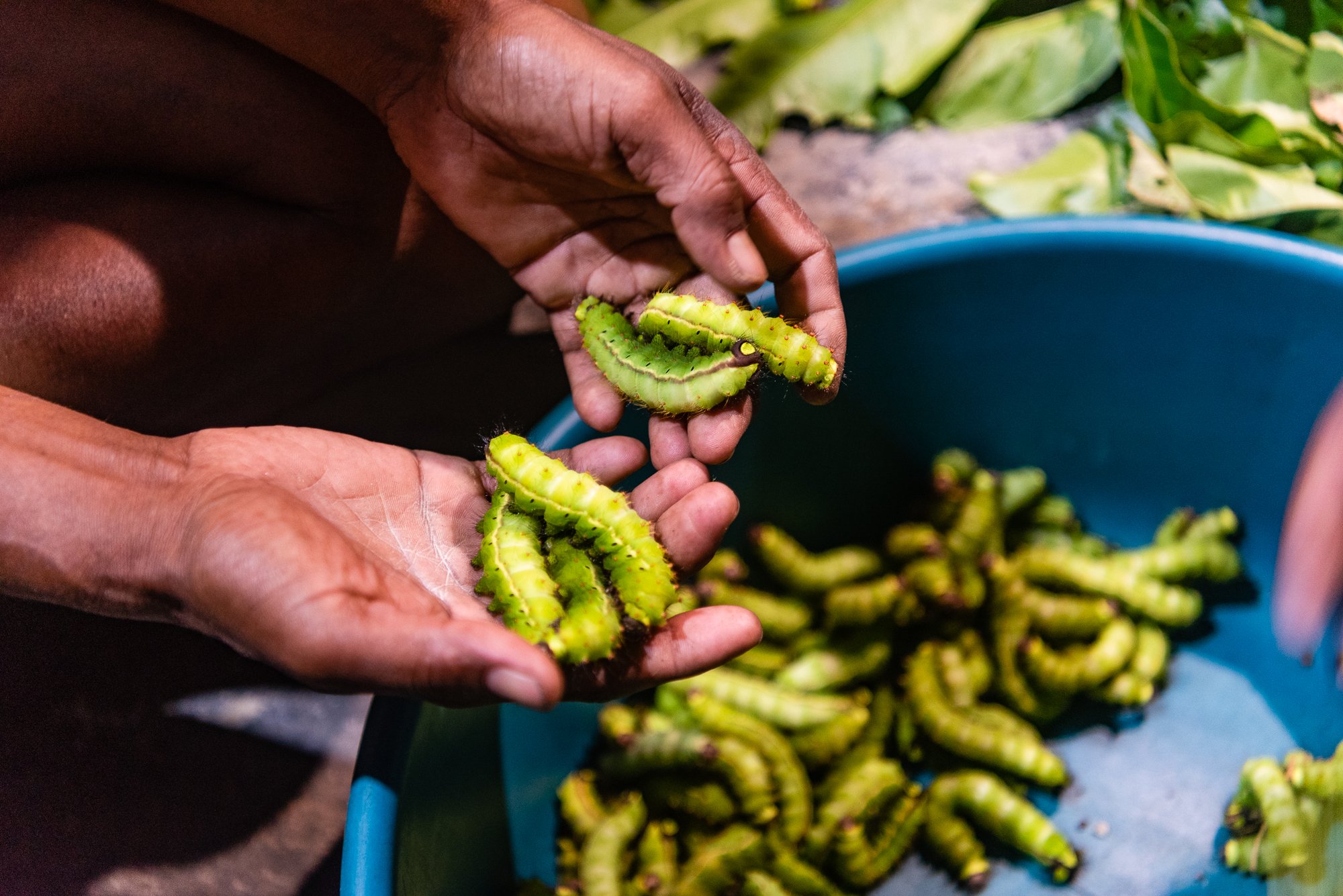In Search of Silk- Assam, India



















The Indobrahmaputra range is one of the wettest richest biodiversity spots in the Himalaya. As we humans adapt to climate change, what about the creatures upon which we rely for clothing?
In November of 2022, Around the World in 80 Fabrics co-founder, @carrolldunham traveled to Loharghat Forest in Assam, India in search of mugha and eri Silk .
Here are notes from her travels…….
Myself and a team of specialists, including photographer Alisha and textile specialist Rituraj, went to explore and discover more about the Eri and the Muga silk moths endemic to the region. In the Loharghat forests, tribal forest commuities have raised these silk worms since at least the 2nd century. Muga silk is the most expensive sillk on the planet. Cynthia Samia, the Eri is mistakenly called Ahimsa silk- no harm for its unique cocoon means the pupae can be removed. It is true, the pupae are removed and are not killed in silk production. They are eaten and provide a critical source of protein for these rural communities. While Eri silk must be spun, Muga silk, a more wild moth, produces a golden cocoon with a single strand that can be as long as 2/3 of a km spun in 12 hours. The genius of Assamese silk farmers with their profound understanding of the biology of silk worms is astounding as these creatures require incredible care with their fussy diets and speciefic tree leaves they eat that are not mulberry. As in Mexico, Nimuta Rabha told me, " The larvae are like our family." Bhiman Rabha took us out to his som tree orchard where only that morning he had placed the freshly laid muga silk eggs up high into the trees. "Birds, and ants are great predators, the monkeys are the cleverest," he told me. "They climb high up into the trees and because Muga silk cocoons are sticky (due to high seracin content) they stick them on their fur then scamper down like theives, covered in silk cocoons."
Told we had come too late, missing the union of moths by hours, we drove as the sun was setting, unsure what we would find only to discover at Uttam Rabha's home a thriving "moth brothel, love hotel" in full action as the moths were emerging from cocoons to immediately mate. WIth climate change challenges, at this time neither the Eri nor the Muga can tolherate more than 1 celcius degree difference in temperature. This summer with record temperatures, record number of silkworm eggs died. How will they adapt?
Humans aren’t the only creature that will need to adapt to a changing climate. In Assam, India, a region with the heaviest rainfall in India, silk farmers shared that, highly sensitive to temperature, this year in June and July massive numbers of eggs were killed by high temperatures. This October, an unusual drop in temperature killed large amounts of seed stock.
